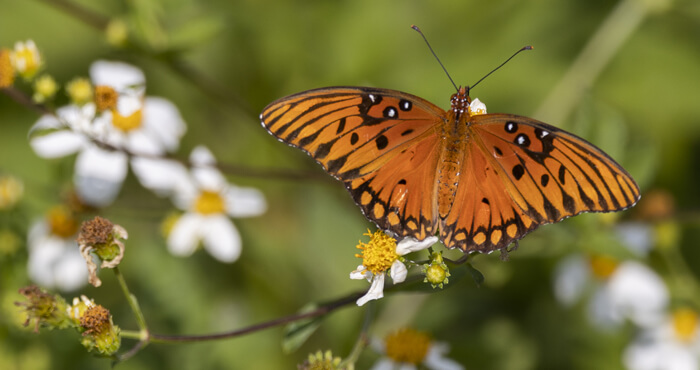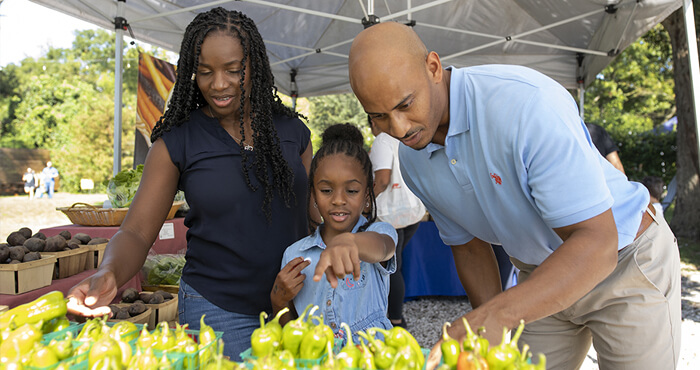
Florida's Cypress Trees
This unique tree dominates Florida's forested wetlands and is important to the state's ecology and economic history.
Description & Habitat
Cypress trees in Florida are either bald cypress (Taxodium distichum var. distichum) or pond cypress (Taxodium distichum var. nutans). Both lose their leaves in the fall and have the characteristic knobby "knees"— roots that protrude above the soil. While they are similar, you can tell the difference between the two by identifying a few key clues:
- Bald cypress trees are larger. They can grow to about 150 feet and reach six feet in diameter.
- Bald cypress leaves are flat and grow on both sides of the branchlets.
- Pond cypress leaves grow scale-like, close to the branchlets.
Cypress can live for hundreds of years. Some old-growth trees in Florida are over 500 years old. Cypress trees tend to grow in forested wetlands, along streams and rivers, in spring runs and ponds, and in places with still or slow-moving water. Cypresses are the most flood-tolerant of all Florida's trees, which is why they dominate swamps that have long flood periods.
Benefits of Cypress Swamps
Wildlife Habitat
Cypress swamps are home to many species, including rare and endangered animals. Large mammals and birds especially take advantage of the plant density and hollow trees of the swamps.
Flood Control
Cypress ponds are depressions in the ground that can hold more water than just soil. Cypress ponds can absorb runoff from storms and slow or prevent flooding during storm events.
Water Quality
Cypress can maintain and improve water quality in the environment. The soil and plants in cypress ponds can remove both phosphorus and nitrogen from treated wastewater. While cypress can handle these nutrients and filter them, smaller organisms can still be impacted by wastewater in the environment.
Cypress History
Geologists believe that cypress trees have been growing in the State for about 6,500 years. In the first part of the 20th century, logging removed most of the large old-growth cypress in Florida. Bald cypress wood became known for its durability and workability.
Cypress wood was used for shingles, siding, piling, ladders, fence posts, stakes, and water tanks and cisterns. By the 1930s, Florida was the leading state in cypress lumber production. In the following years, the cypress industry experienced small rises and falls. In the 1990s, cypress harvest started to rise again as trees in previously harvested swamps grew to merchantable size. However, these trees have less decay-resistant hardwood than was found in old-growth cypress. Currently, cypress trees are harvested mainly for saw timber and landscape mulch.
Originally, cypress mulch was produced using waste wood from sawmills. However, the increased demand for mulch has led to an increase in harvesting the smaller pond cypress, as well as other cypress previously thought too small for harvesting. UF/IFAS Extension does not recommend purchasing cypress mulch for your landscape. Younger trees harvested for mulch do not have the natural pest resistance of old-growth wood, and cypress tress are needed in our swamps where they serve an important ecological function.
Cypress in Florida
Many of the State's natural areas offer the chance to take in views of these majestic trees.
Panhandle
- Wakulla Springs State Park
- Apalachicola National Forest: Try Wright Lake, Hickory Landing, and the Apalachee Savannahs Scenic Byway.
- Tate's Hell State Forest: You'll see dwarf cypress (pond cypress that grow in nutrient-poor soils) that are less than 15 feet tall but more than 100 years old.
- Choctawhatchee River Wildlife Management Area: This area has some of the larger cypress trees in Florida.
- Okefenokee National Wildlife Refuge
North Florida
- Suwanee River State Park: Bald cypress trees line almost the entire length of the river.
- Manatee Springs State Park
- Morningside Nature Center: The center has a boardwalk to a pond cypress dome.
- O'Leno State Park
- Ichetucknee Springs State Park
Central Florida
- Withlacoochee State Forest: The Richloam Wildlife Management Area in the forest is the best place to see cypress.
South Florida
- Everglades National Park: The Everglades is the southernmost range of cypress in the United States. You can also see dwarf cypress along the road to Flamingo.
- Big Cypress National Preserve
- Collier-Seminole State Park
- Fakahatchee Strand State Preserve: This preserve has the world's only royal palm-bald cypress forest and one of the last remaining virgin bald cypress stands.
- Corkscrew Swamp Sanctuary: This swamp has one of the largest old-growth bald cypress stands in Florida.
- Loxahatchee National Wildlife Refuge
- Highlands Hammock State Park
Adapted and excerpted from:
M. Duryea and L. Hermansen, Cypress: Florida's Majestic and Beneficial Wetlands Tree (CIR1186), School of Forest Resources and Conservation (rev. 6/2006).
NATURAL RESOURCES
- Africanized Honey Bees
- Biting & Stinging Insects
- Ecosystems & Species
- Invasive Species
- Water Resources
- Nuisance Wildlife
- Plants
- Sustainable Living - Environment
- Wildlife





.jpg)

.jpg)